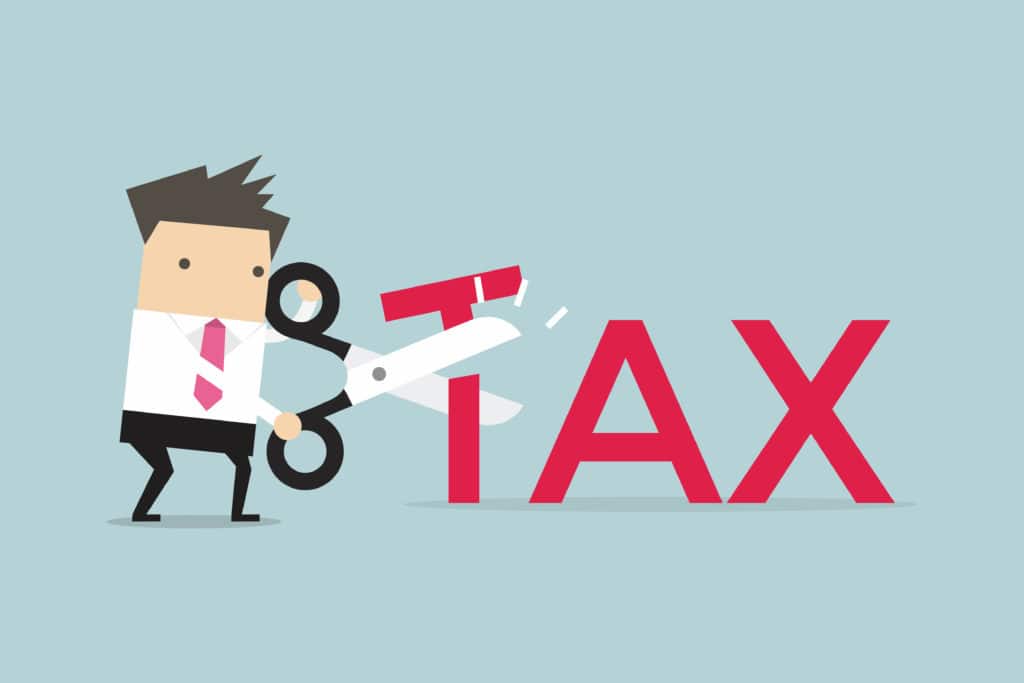How To Minimize Tax Payments for RMDs

As your Self Directed IRA saves for retirement, you are probably receiving regular statements as to the size of your nest egg. Those statements can provide a nice number, but they may not be accurate. If you have a Traditional retirement account (as opposed to a Roth), then you might be looking at a large tax bill when you start taking Required Minimum Distributions. Why should that be the case and what can you do to avoid it?
The Government’s Incentive For Retirement Saving
Retirement saving is promoted by the government with a very specific incentive: tax savings. Under ideal circumstances, your Self Directed IRA can benefit from these tax savings twice. The first is when you make a retirement account contribution. That contribution is deducted from your earned income that year and could potentially place you in a lower tax bracket. (Of course, since the contribution is deducted from earned income, you’ll naturally be paying less anyway.) Even if you didn’t contribute enough to qualify for the lower tax bracket, you can still save when you take a RMD. That’s because most account holders will likely be in a lower tax bracket when they begin taking RMDs. What this means practically is the taxes you owe on your distribution will be assessed at a lower rate than the rate applied at the time of your employment.
IRS Tax Brackets
Before we get into the details, let’s get a quick overview of the current tax brackets. The IRS periodically adjusts tax brackets to account for inflation and other factors. Here are the 2021 brackets:
#overflow-table table { table-layout: fixed; width: 100%; border-spacing: 0px; } #overflow-table table td { overflow: auto; border: 1px solid black; padding: 5px; margin: 0px; }| Single Income | Married Joint Income | Tax Bracket |
| (less than) $9,950 | (less than) $19,900 | 10% |
| $9,950 | $19,900 | 12% |
| $40,525 | $81,050 | 22% |
| $86,375 | $172,750 | 24% |
| $164,925 | $329,850 | 32% |
| $209,425 | $418,850 | 34% |
As you can see from the chart, being in a lower tax bracket can provide significant tax savings. For example, if a person is making $90,000/year, then they would be in the 24% tax bracket and their tax liability comes in at $21,600. However, if they make a $5,000 Self Directed IRA contribution, their earned income would only be $85,000. That would drop them to the 22% tax bracket with a reduced tax bill of $18,700. In other words, by making a retirement contribution, they were able to save $2,900 on their current tax bill. Now, that number is not absolute as they will have to pay taxes on that contribution at some point in the future. Exactly how much though is what we need to discuss.
Taxing the Retirement Contribution
What happens at the other end? When you start taking RMDs from your Self Directed IRA there are two tax consequences. The first is that you will be required to pay taxes on the amount of the distribution. The second is that it counts to your earned income for that year. If you’re at the lower end of a tax bracket, that might not be such a big deal. However, if you’re getting close towards the next bracket or you happen to have a large RMD, then it could bump you up a bracket. Let’s take a look at how this could play out.
Rita is 73 and mostly retired. Pursuant to a long and successful career as an elementary school teacher, she now works as a part-time reading tutor at her local library. The salary for her position is $32,000/year. When reviewing some of her financial documentation she realizes that she has an RMD coming up with a minimum distribution of $11,000. From a tax perspective that means she has $43,000 of earned income. Calling her accountant, she realizes that the RMD has bumped her up a tax bracket from 12% to 22%!
Almost doubling your tax bill is a big deal. Unfortunately for Rita there is not much she can do about it right now. However, if she had started planning sooner, she may have been able to save herself a lot of money.
Proactive Planning For RMDs and Taxes
If a Self Directed IRA investor puts together a RMD strategy early, they can save a significant amount. The main point of the strategy is to start taking RMDs early and in amounts that work with the tax brackets. This strategy takes advantage of two elements of RMDs:
- Distributions taken earlier tend to the lower the amount of future RMDs.
- Investors can start taking distributions at 59.5 without penalty.
What this allows you to do is to take a distribution early but at an amount that won’t bump you up into the next tax bracket. You can even do this while you’re still working. By drawing down your Self Directed IRA early, you can fulfill the RMD requirements and do so in a way that saves on your tax bill.
The Advantage of a Self Directed Roth IRA
Another strategy that can help you with your tax bill is to open your retirement account as a Roth IRA or to make a Roth conversion. In a Roth IRA the RMDs are tax free because you made the initial contributions with post-tax dollars. RMDs in a Roth do not count as earned income and won’t bump you up in the tax brackets. If you have a Traditional IRA and want to do a Roth conversion, keep two things in mind:
- Roth IRAs have a “5 year rule” which states that you have to have had a Roth open for at least 5 years before you can realize the full tax benefits. Practically this means that you should consider the conversion early enough so that you can take advantage in a timely manner.
- The Roth conversion itself will count as earned income, and could potentially place you in the top tax bracket. Planning the conversion in steps could save a significant amount.
RMDs and the Self Directed IRA
If you are invested with a Traditional Self Directed IRA, then chances are you possess real estate or other non-liquid assets. That doesn’t significantly change any of the strategies discussed above, but it does require a further degree of planning. Keep in mind the time frame for the liquidation of the specific asset and how that may affect your distributions.
Questions? Schedule a call with a Madison specialist and get the answers you need.










